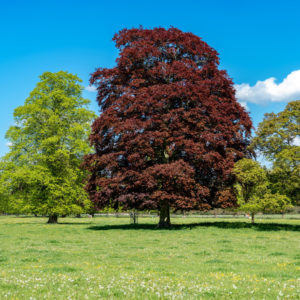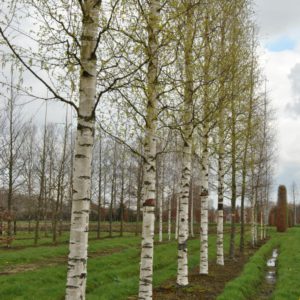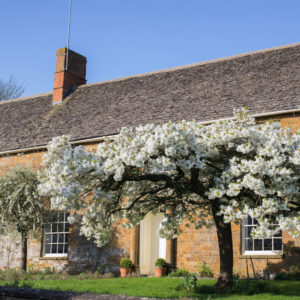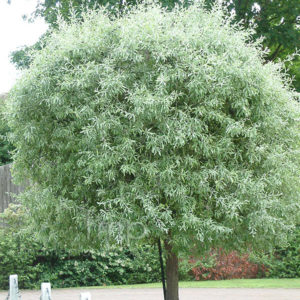Quercus robur / Common Oak
Price range: €180.00 through €650.00
Frequently Bought Together
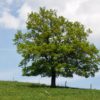



Description
Quick Facts
- Common Name: English Oak, Pedunculate Oak, Common Oak
- Botanical Name: Quercus robur
- Plant Type: Deciduous tree
- Mature Height: 20-40m
- Mature Spread: 15-25m
- Flowering Period: April to May
- Flower Colour: Yellow-green catkins
- Foliage: Lobed leaves with distinctive auricles at base, turning golden-brown in autumn
- Hardiness: RHS H7 (very hardy)
- Soil Requirements: Deep, moist, well-drained, tolerates heavy clay
- Aspect: Full sun to partial shade
- Maintenance: Low
Description
Experience the majestic grandeur of Quercus robur, our most iconic native tree that brings centuries of heritage, unparalleled wildlife value, and noble presence to Irish gardens and estates with its magnificent spreading crown and deeply fissured bark. This legendary native oak offers exceptional long-term value—a massive spreading crown that creates substantial architectural presence and provides habitat for more wildlife species than any other native tree, distinctive deeply lobed leaves with characteristic rounded auricles at the base, acorns on long stalks (peduncles) that provide vital food for wildlife, and remarkable longevity with trees living for centuries and becoming more characterful with age, making this the ultimate legacy tree for Irish landscapes and the cornerstone of native woodland ecosystems.
Throughout spring and summer, this magnificent tree displays its characteristic deeply lobed leaves measuring 7-14cm long, with 4-5 rounded lobes on each side and distinctive small rounded projections (auricles) at the base where the leaf meets the very short stalk. The leaves emerge late in spring with a beautiful bronze tint, maturing to rich green and creating a dense, substantial canopy. In late spring, pendulous yellow-green male catkins appear alongside tiny inconspicuous female flowers. By late summer, the distinctive acorns develop on long stalks (peduncles—hence the name ‘Pedunculate Oak’), ripening to brown in autumn and providing essential food for jays, squirrels, badgers, and countless other wildlife species. The bark is the tree’s crowning glory—grey-brown and deeply fissured, becoming increasingly rugged and characterful with age, creating stunning textural interest and supporting countless invertebrates, lichens, and mosses.
Native to Ireland, Britain, and across Europe, this remarkable tree is woven into the very fabric of Irish history, culture, and mythology, revered by ancient Celts and forming the backbone of our native woodlands for millennia. The name ‘robur’ means ‘strength’ in Latin, perfectly describing this mighty tree. Exceptionally hardy and long-lived, English Oak thrives in Irish conditions, tolerating heavy clay soils, exposure, and challenging sites whilst providing unmatched ecological value—supporting over 2,300 species of wildlife including 326 species of invertebrates, making this the single most important tree for biodiversity in Irish gardens.
Create stunning compositions by planting as magnificent specimen trees in large gardens, estates, or parkland where the spreading crown can develop fully over generations. Exceptional for woodland creation, wildlife gardens, and rewilding projects where ecological value is paramount. Works beautifully combined with other native trees like birch, rowan, and hazel to create authentic Irish woodland character, or underplanted with native bluebells, wood anemones, primroses, and ferns that thrive in oak woodland conditions.
Caragh Garden Notebook
Planting: Space trees 20-25m apart for woodland plantings, or allow 25-30m for specimen placement to accommodate the massive mature spread—this is a tree for future generations. Plant bare-root trees from November to March (ideal), or container-grown specimens year-round. Dig holes twice the width of the root ball and incorporate organic matter into heavy clay. Plant at the same depth as the nursery soil mark. Stake securely for the first 3-5 years. Water thoroughly and mulch generously around the base. Choose planting locations carefully—this tree will dominate the landscape for centuries.
Soil Preparation: Thrives in deep, moist, well-drained soil with pH 5.5-7.5. Particularly well-suited to heavy clay soils where many trees struggle. Prefers deep, fertile, moisture-retentive conditions but adapts to a wide range of soil types. Requires deep soil for the extensive tap root system. Avoid only very shallow, dry, or waterlogged sites. Incorporate well-rotted compost or manure to improve soil structure. Best growth occurs in full sun with deep, fertile soil and adequate moisture.
Container Growing: Not suitable for container growing due to massive size, vigorous growth, extensive deep tap root system, and centuries-long lifespan. This is a tree for planting in the ground in appropriate locations where it has space to develop into the magnificent specimen it’s destined to become—a legacy for future generations.
Seasonal Care: Requires minimal maintenance once established—the naturally noble form develops without intervention. Remove only dead or damaged branches in late autumn or winter when dormant. Any formative pruning should be done when young to establish good structure and a strong central leader. Apply slow-release balanced fertiliser in early spring for the first few years if needed, though established trees require no supplementary feeding. Mulch generously with organic matter to retain moisture and suppress weeds. Water during prolonged dry spells in the first 3-5 years until the deep tap root is established.
Propagation: Propagate from acorns collected when ripe in autumn—plant immediately as acorns lose viability quickly. Sow individually in deep pots (minimum 20cm) or directly in the ground where the tree is to grow, as oaks develop deep tap roots quickly. Plant 4-5cm deep. Germination occurs in spring. Protect from mice, squirrels, and jays. Seedlings show natural variation. Most gardeners prefer to purchase nursery-grown specimens for guaranteed quality and faster establishment.
This legendary native beauty is the ultimate legacy tree—majestic, noble, and supporting more wildlife than any other tree in Ireland! That massive spreading crown, those deeply fissured bark, and the knowledge that this tree will stand for centuries, becoming more magnificent with each passing generation. Plant an English Oak and you’re planting history, heritage, and a living monument for future generations.


